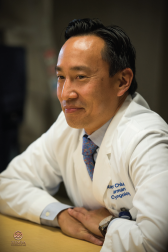Women have made progress in leadership roles in our academic societies and training programs, but progress toward equity in otolaryngology has not come quickly enough.


Women have made progress in leadership roles in our academic societies and training programs, but progress toward equity in otolaryngology has not come quickly enough.
Life and medicine are continuously changing at a seemingly accelerating pace. When we attempt to avoid change and cling to the ‘way things were,’ we stop moving forward and growing.

Otolaryngology needs more women practitioners and more persons of color.

Diversity of thought, mind, and body is a key message in June’s issue of ENTtoday.
Dr. Sims has eloquently identified the value of diversity not only in otolaryngology, but also its contribution to the strength of the U.S. as a nation. Drs. Kuppersmith and Thomas have responded to his editorial indicating steps that the AAO-HNS has taken and is currently taking to increase diversity.
My Viewpoint was intended to call attention to a problem and inspire us to act with more alacrity.
We read with great interest Dr. Steven Sim’s recent op-ed, “More of the Same: Why isn’t otolaryngology becoming more diverse?” in ENT Today (Viewpoint, Sept. 2010).
As America grows and evolves, its face necessarily changes. Our country rests solidly on the idea that life, liberty and the pursuit of happiness should be available to all. Our collective understanding that access to health care and healthy living are essential to that ideal happiness continues to mature. But while the population becomes more diverse and blended, cultural disparities in health care not only persist, they do not appear to be diminishing. Collectively, African-Americans, Hispanic Americans and Native Americans comprise over one-quarter of our population. Yet, in the year 2000, they made up less than 10 percent of the physician workforce. These numbers dwindle even more when we consider surgical subspecialties.

Diana C. Ponsky, MD, assistant professor of otolaryngology-facial plastic and reconstructive surgery at Case Medical Center in Cleveland, Ohio, went to medical school wanting to be a pediatrician. She happened upon otolaryngology “by accident, by scrubbing into a very fascinating cancer case. I was hooked,” she now recalls.

Within the ongoing discussion on the need to reform the delivery of health care in the United States to better balance issues of cost, quality, and accessibility is an underlying issue that, if not sufficiently recognized, will undermine all efforts at reform.